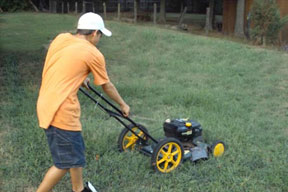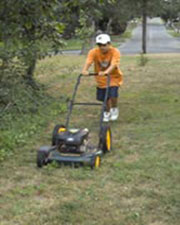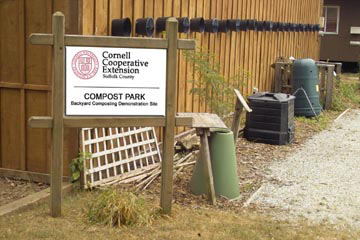
Avoid blowing lawn clippings into the street or dumping grass clippings down storm drains. Leaves or grass clippings that enter storm drains eventually discharge to local waterbodies, providing surface waters with excess nutrients. Excess nutrients are released as bacteria decompose leaves, grass, and other biodegradable material. This can cause algae blooms and reduce oxygen levels. The resulting low oxygen levels (hypoxia) can result in wildlife and sea grass mortalities.

Leave grass clippings on your lawn after mowing. The nutrients in the clippings provide the best and cheapest fertilizer for your lawn. For more information see Cornell Cooperative Extension's web page “Just mow it: A Guide to Grass Recycling”
Collect debris from your driveway and sidewalk by sweeping with a broom and dispose of in the trash properly. Grass and leaves can be swept and reapplied to your lawn. Do not use water to hose your driveway. The water can carry dirt, oils, and pet waste directly into storm drains and eventually surface waters.

Composting is another way to use leaves and grass clippings. Mixing with household waste such as vegetable scraps and eggshells creates a soil compost material that is great for flower beds and potting soil. For more information see Cornell Cooperative Extension's web page “Choosing a compost system”.
Use Native Long Island Plants!
Native plants of Long Island are best adapted to local soils, water and pests.
They also require less or no fertilizer compared to exotic plants.
To learn what garden plants are native to your state click here.